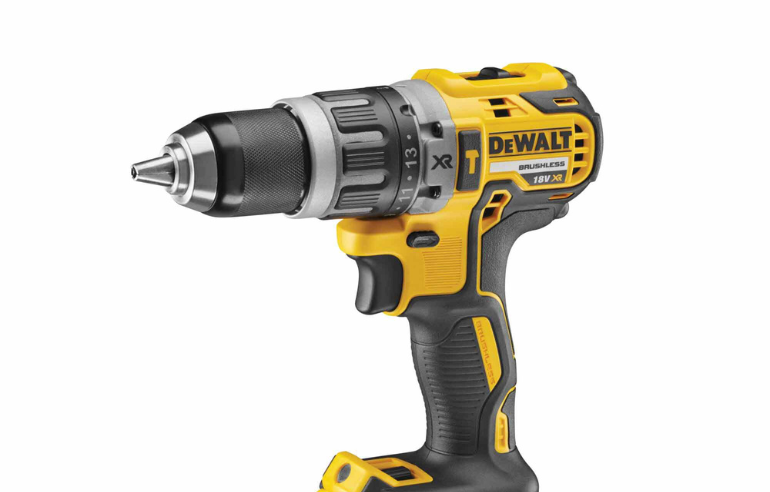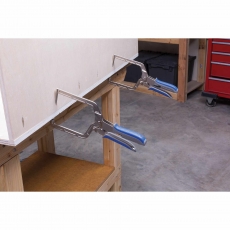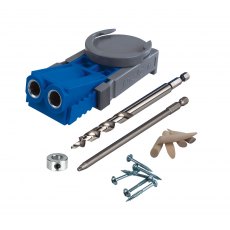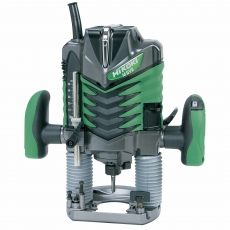How To Use a Power Drill - The Complete Guide

It might seem like a power drill is the kind of tool only a serious DIYer or a trade professional need, but they’re useful for so many tasks around the home that even a complete beginner can benefit from buying one. But before you do, it’s always worth making sure that the drill you’re thinking about purchasing is right for you.
What is the best drill for a beginner?
We recommended a cordless combi drill because with the correct accessory, you’ll be able to complete a variety of tasks without having to switch between tools. Drilling, driving screws, boring holes into wood, metal or masonry and many more essential tasks can be completed by a cordless combi drill. What’s more, the combi drill’s rechargeable battery allows you complete freedom to move around your home without being limited to the length of a power cord. Just as we suggested last year, the DeWalt DCD796P1 18V XR Brushless Combi Drill with 1x5ah Li-ion Battery remains an excellent place to start your search, but there are lots of options available, including tools from Bosch, Makita and Trend.
If you’re looking for either a combi drill or an impact driver, check out our DeWalt vs Makita guide and the follow-up, in which the same group of DeWalt products went head to head with Bosch power tools. We also have a helpful guide on what tools you should have in your toolbox, which will give you guidance on the types of tools that you’ll need on a day-to-day basis.
What to look for when buying a Power Drill?
Our drill buying guide provides an overview of the different types of drill we offer. When comparing different tools, here are a few pointers of what to look for:
- Torque: The power with which the drill moves around during operation. The number of ‘Torque Settings’ offered by a drill is the number of different power settings available. These are usually used when driving screws as, depending on the material you’re working with, you may need to adjust the torque to ensure the screws are flush. When drilling into material, your tool will usually be operating at the highest torque setting.
- Voltage: In cordless tools, the voltage helps to indicate the power of the tool. The most popular voltage is 18v, but there are more powerful options becoming available, such as the Makita HP001GD201 40v Brushless XGT Combi Drill. If you’re new to using this kind of equipment, an 18v drill will be fine.
- Chuck Capacity: This helps you to identify the minimum and maximum shank size of drill bits and accessories that will fit the drill.
- Speed (RPM and IPM): These are measurements of the speed at which the drill rotates (Revolutions Per Minute or RPM) and the way in which it operates in hammer mode (Impacts Per Minute).
- Drilling Capacity: This tells you the maximum diameter of hole which can be drilled in a specified material.
You’ll also need drill bits. There are drill bits and accessories of all kinds and you’ll need the right bit for each job. For example, you wouldn’t use the same bit to join two pieces of wood as you’d use to drill into a wall. For more information about the different options, have a look at our drill bits buying guide.
READ NEXT: How To Put Up A Coat Rack For The First Time
![preparing to use a power drill]()
How To Drill A Hole With A Power Drill
1. Carry out safety checks
Make sure you can hold the drill comfortably and have considered any safety provisions you might need to put in place, such as eye protection.
2. Select your drill bit
Then, you need to select your bit. Bits for driving screws will be shaped like the end of a screwdriver while drill bits will usually be numbered. This number indicates the diameter of the bit, the higher the number, the wider the hole.
Similarly, make sure your bit is long enough to drill to the depth you need. When comparing drill bits and accessories, you may find that the specification includes both a ‘working length’ which is the maximum depth of material the bit can penetrate and the overall length from end to end.
3. Insert the drill bit into the chuck
The chuck is the collar which holds your bit in place. Most modern drills have a keyless chuck, which enables the user to turn the collar anti-clockwise (if the drill is facing you). Before inserting a new bit, or changing bits, make sure you have removed the battery. Open the chuck just enough to place the bit into the drill, then rotate the collar in the opposite direction until its tight. For safety, once you’ve heard the chuck clicking into place, turn it back for one click to make sure you haven’t over-tightened the chuck. When you’re using your drill, the rotation will keep the bit securely in place.
4. Drill a pilot hole
You may want to drill a pilot hole if you’re driving a screw into place, particularly if you’re working with a type of wood which is prone to cracking. You can do this by chucking in a bit slightly smaller than the diameter of the screw, drilling the hole, then driving the screw.
You might also need other accessories to ensure you’re working exactly where you need to be, such as tape measures, spirit levels or laser levels, all of which can help you achieve the best possible results.
5. Get into positon
Making sure you have your finger off the drill’s trigger, place the drill bit on the spot where you’ll be working, or, if you’re driving a screw, place the driver bit into the head of the screw.
6. Start drilling your hole
Most drills provide variable speed operation; how quickly the drill rotates is determined by the pressure on the trigger. So, don’t press too hard to start with! Begin slowly by gently squeezing the trigger. You can always add extra pressure if you need it.
7. Apply some pressure
In most cases, as you drill, you will need to gently press on the drill to guide it towards your work piece. Depending on the depth to which you’re drilling, you may go through the work piece. To remove the tool, allow it to come to a complete stop, then pull it towards you while it isn’t rotating. If your bit becomes stuck, you can use the tool’s reverse mode and some gentle pressure on the trigger to clear the jam.
READ NEXT - How To Put Up A Curtain Rail
![using a power drill]()
ToolStore UK: your one-stop shop for drills, bits and so much more
Since 1963, we’ve been one of the UK’s leading independent tool retailers. Whether you’re looking for cordless power tools, hand tools or accessories, you can count on ToolStore UK. We’re a fourth-generation family-run firm and we love helping our customers to get the right tool at the right price. If you need help or advice before placing an order, you can give us a call on 03330 043777, call into our store in Wigan, or send us a message.
Read More From ToolStore UK
Best Impact Drivers For 2023
Read MoreHow To Maintain A Cordless Drill
Read More- 12th May 2023



















